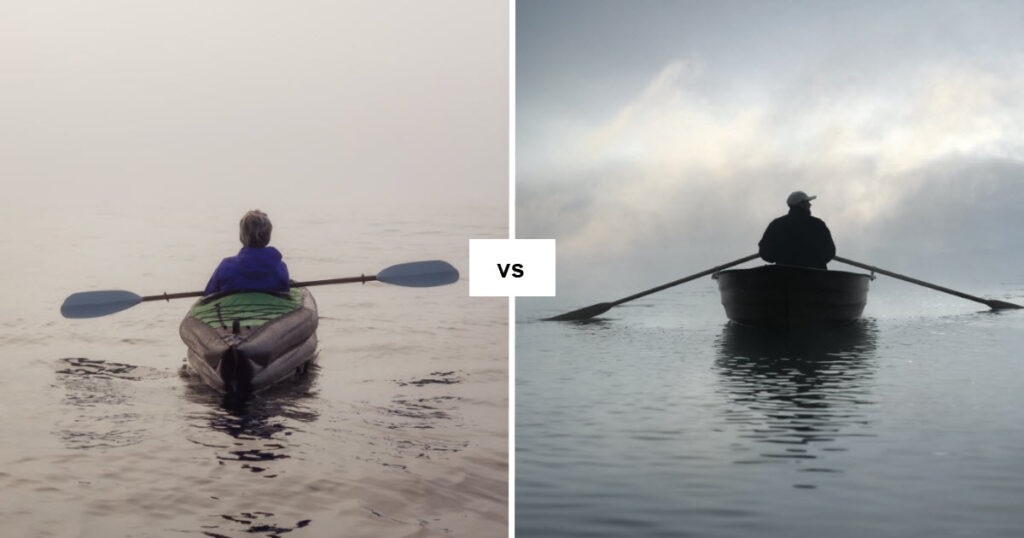If you’re new to watersports, you may be wondering about the differences between paddling different types of boats. Paddling a kayak and rowing a boat are two very different things, but each is popular with folks who want to get out on the water and explore mother nature. Today, I’m bringing you my kayaking vs rowing comparison to explain how paddling a kayak differs from rowing a boat.
Whether it be for recreation, competition, or for transporting you or your family from one place to another, there is sport, and a vessel, made for all occasions.
Here, I’ll be taking a deep dive into the world of aquatic activities. Specifically, I’ll discuss the difference between the kayaking and rowing.
That way, you can decide on the best activity for you.
I’ll talk about everything from the equipment used, the differences in technique, all the way to the parts of the body being exercised when taking on the different activities.
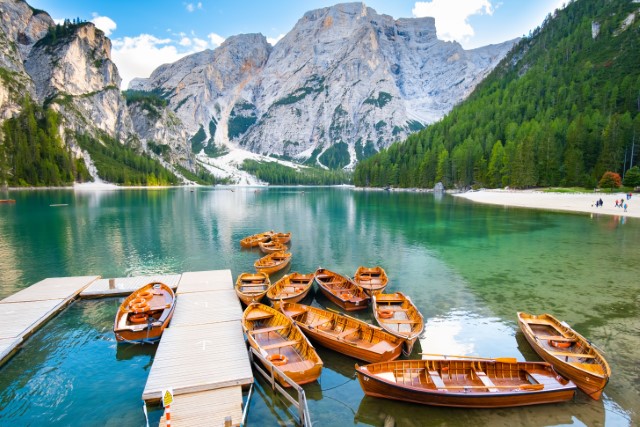
If you’re looking to answer questions such as which activity will get you the farthest in the shortest amount of time, or which one will give you a killer upper body workout, you’ve come to the right place!
What are the Differences Between Kayaking and Rowing?
There are several differences between kayaking and rowing. At the most basic level:
- When paddling a kayak you are propelling the boat in the direction you are facing with a single, two-bladed paddle.
- When rowing a boat you use two individual oars, situated in oarlocks on the sides (gunnels) of the boat, and you face the rear of the vessel, propelling it in the direction you are not facing.
You can read more about the difference between an oar and a paddle here, but the differences between kayaking and rowing don’t stop there.
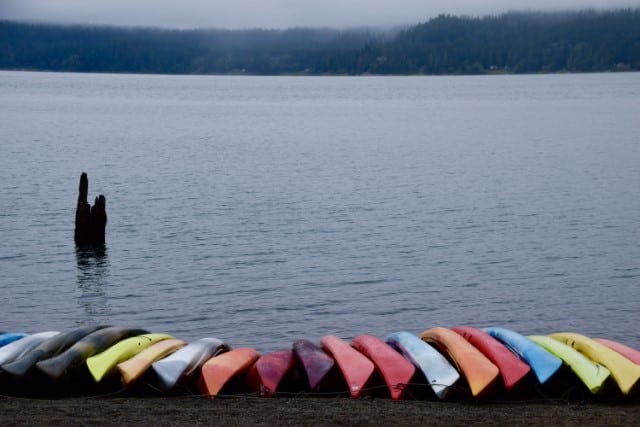
As mentioned earlier, the differences between kayaking and rowing lie in the way that they differ in terms of technique, equipment used, and purpose.
Here, I have compiled a brief comparison table to give you the gist of it before getting into specifics:
Technique
| Kayaking | Rowing |
|---|---|
| – Faces forward – Forward facing alternating strokes – Uses upper body | – Faces backwards – Backwards sweeping motion – Uses upper body, back, legs, and knees |
Equipment Used
| Kayaking | Rowing |
|---|---|
| – Kayak – Single paddle | – Rowboat – Two oars |
Purpose
| Kayaking | Rowing |
|---|---|
| – Recreation – Exploration – Quick transport – Fits 1-2 people | – Competitive rowing competitions – Speedy transport from one place to another – Exercise – Can fit up to 10 people depending on the vessel |
Kayaking Techniques
A big difference between kayaking and rowing is that kayakers only use one two-bladed paddle while rowers use two oars.
There are several different paddle types to choose from. You need to choose a type that is suitable for your chosen activity, and your kayak paddle must be sized properly as well.
Some paddles are singular, and others can be double ended.
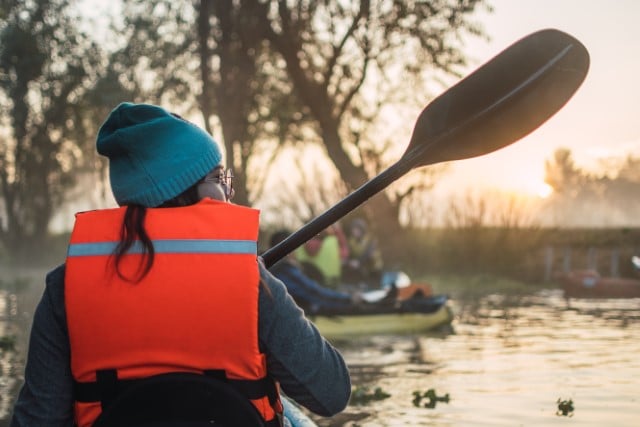
The paddling technique includes utilization of the upper body, using the paddle in alternate motions, in order to propel the kayak through the water.
Paddling makes heavy use of your upper body, helping to promote a strong and stable core, firm shoulders, and arm strength. You need this strength to move the kayak from one place to another.
There are different types of strokes that paddlers use to get the movement they want. Some of the most common include: the forward stroke, reverse stroke, sweep stroke, and the draw stroke.
I’ll talk about these different strokes below.
Forward Stroke
As the name suggests, this is the type of stroke you use when you want to move forward. It is the most commonly used and is done by using three movements called the catch, power, and release.
The catch phase prepares and positions your paddle by your feet, preparing you for the power phase which requires rotating your torso while moving the blade from your feet to behind you.
The release phase is the last phase, pulling your paddle out of the water and preparing to do it all again.
Reverse Stroke
The reverse stroke does the opposite of the forward stroke (obviously). It is done by paddling from the front, to the back of the kayak.
Instead of moving the paddle behind you during the power phase, you will be moving it in front of you.
Sweep Stroke
The sweep stroke is used in instances when you want to turn the kayak. It is done by positioning your body from the opposite side of the direction in which you want to move, and sweeping the paddle in an arc motion.
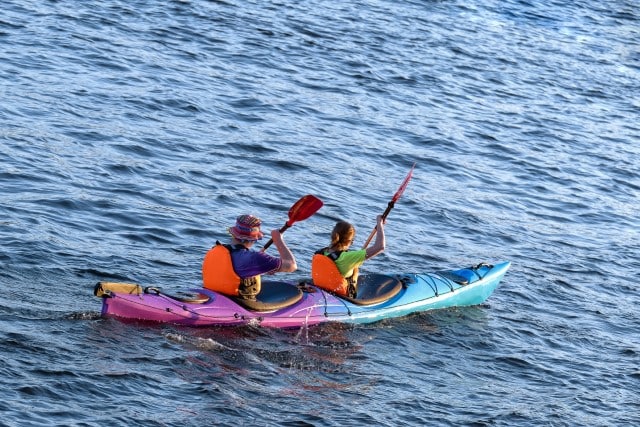
Draw Stroke
The draw stroke is used to move the kayak sideways, or for pulling it toward something such as another boat or a dock.
This is done by moving your paddle in a parallel motion, essentially bringing the paddle towards you. For this stroke, your hand will be positioned closer to the end of the paddle and it may take a few strokes to see any movement at all.
Of course, these are just the basic strokes and techniques used in paddling.
For more seasoned kayakers, there are a lot of different combinations that you can use to make different strokes. Once you get the hang of the basics, of course.
Rowing Techniques
Rowing requires the use of two oars that are held in by compartments in the boat, while propelling the boat in a backwards motion in order to move forward through the water.
You need to use the proper rowing technique in order to maximize performance and prevent injury. Rowing injuries are more common than you think!
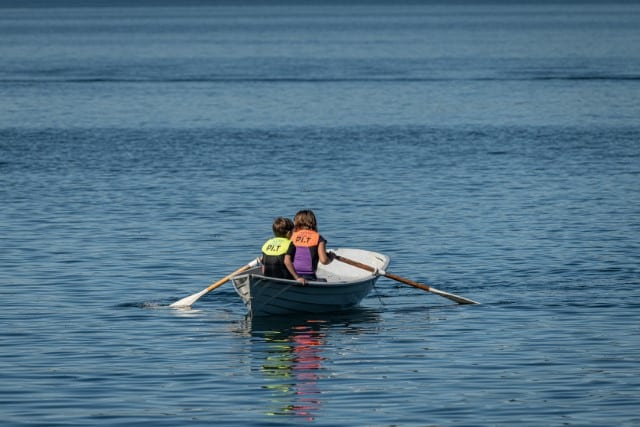
There are different rowing techniques used to get different movements.
Some are geared more towards maximizing speed, while others are used for maneuvering through the water in certain directions.
The basic strokes include the basic rowing stroke, feathering, sculling, and sweep rowing.
Basic Rowing Stroke
You accomplish the basic rowing stroke with four movements: the catch, drive, finish, and recovery.
This will require the movement of your whole body. It starts with positioning yourself at the front of the sliding seat, and using your legs to push back and gain momentum to bring the oars from behind you, to in front of you in a repetitive motion.
Feathering Stroke
The feathering stroke focuses more on adjusting the angle of the oar as it comes up and out of the water for easier maneuvering.
This means turning the blade of the oar as it is out of the water to be parallel to the water’s surface. This creates less resistance, making it easier to move.
Sculling
Sculling is a technique used in a sculling boat which is designed for more than one person to maneuver. It means that two or more people will be rowing simultaneously with two oars, one in each hand to propel themselves through the water.
Sweeping Stroke
The sweep stroke in rowing involves using both hands for a single oar. This is done to move the boat in a specific direction and can be done by one or more people in alternate timing to get the boat to a specific location.
As you can see, rowing involves more use of the entire body, and in most instances it requires more cooperation with the people on your vessel, otherwise you wouldn’t get very far.
Kayaking Equipment
The obvious answer is that kayaking requires the use of a kayak. There are many different types of kayaks on the market for different purposes, and we mean many.
From lightweight kayaks that are easy to transport, to recreational kayaks, duck hunting kayaks, tandem fishing kayaks, and even white water kayaks, the list goes on and there’s something for everyone.
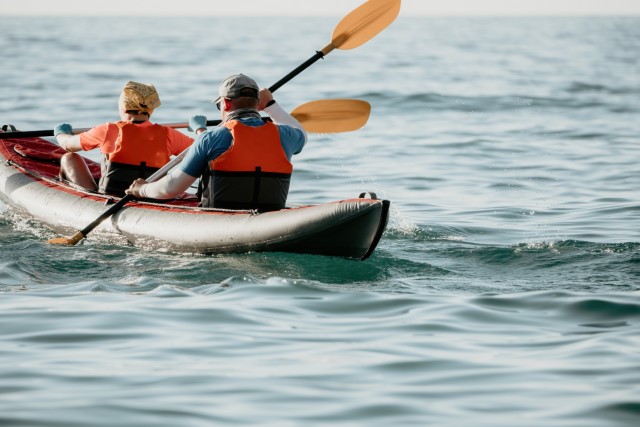
There are two main types of kayaks: sit-in kayaks and sit-on-top. The difference is simple: one you sit inside, and the other you sit on top of.
Sit-In Kayaks
As the name suggests, sit in kayaks are kayaks that you sit inside of. These boats are sealed on top, enclosing your legs in, like a capsule.
You’ll usually want to use a sit-in kayak if you go out on the water in windy conditions, as it will keep your legs from getting wet.
Sit-On-Top Kayaks
Sit-on-top kayaks, on the other hand, are completely open. While you are more prone to getting wet and really feeling the outside conditions, these kayaks are generally easier to get in and out of.
Accessories
As mentioned earlier, the key accessory for the kayak is the paddle.
You just need one kayak paddle, and it can be one-sided or double-sided. Paddles come in a variety of different sizes depending on your needs.
Rowing Equipment
Row boats are bigger than kayaks as they are built to hold more people. If you want an activity that you can do on your own, rowing isn’t right for you.
All in all, they are larger, slimmer, and heavier compared to a kayak. There are two main types of rowboats, crew boats and sculling boats.
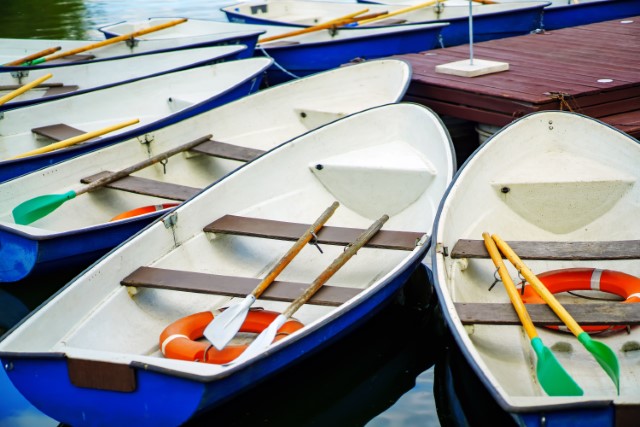
Crew Boats
Crew boats are set up to where each person has only one oar in hand that requires both hands to maneuver.
While the boaters are seated single file, the oars are positioned to alternate between one rower using a left oar and the other using a right.
Sculling Boats
Sculling boats are what comes to mind when most people think about row boats.
They are positioned to where each rower has two oars in hand, and the rowing team rows all together in a singular motion and rhythm to get the boat where it needs to be.
Accessories
Oars can also vary in terms of shape, material, and length. Some are more slender in its body, while some offer a square tip.
The type of oar to get will depend on what type of movement and speeds you are looking for.
Purpose and Benefits
Both kayaking and rowing are watersports that bring great benefits to improving overall health and wellness. They both require use and exercise of the body and are a great way to get that cardio in.
Purpose and Benefits of Kayaking
At its core, kayaking is a recreational activity that has many benefits. Whether it be on white water, calm rivers, or even in the open ocean, it’s meant to be a fun activity that gets your adrenaline pumping.
Some people bond over tandem kayak trips, while others prefer to go out in groups of single kayaks and experience the adventure together.
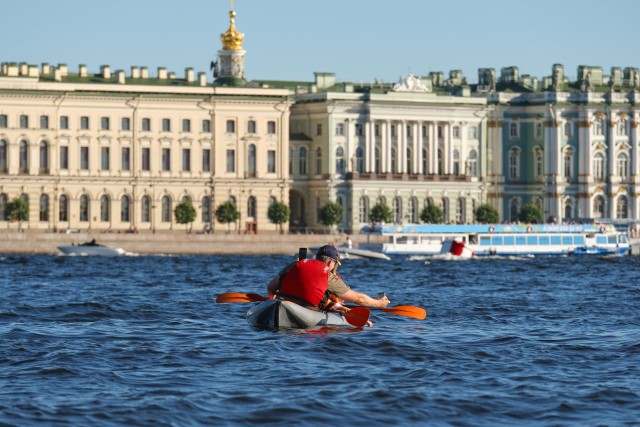
Nevertheless, kayaking is great exercise, and offers great benefits to your overall health and wellness. Doing so is a great form of exercise as it keeps your heart pumping, burns calories, and it’s a great way to get some work in on your upper body and arms.
Overall, kayaking is great for those who seek adventure, while getting in some quality time and a good workout along the way!
Purpose and Benefits of Rowing
Generally, rowing is a competitive sport. It’s done in teams where one races to beat the other in record time.
Unlike kayaking, rowing is a full body workout all together. From your legs and knees, to core arms and back.
It is a sport that requires full dedication and calculation. Rowers even train for this off season to prepare and condition their bodies.
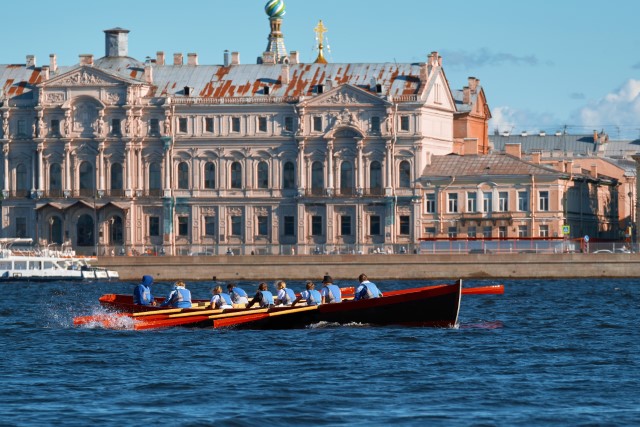
At a glance, technique, teamwork, and an insane amount of core strength is needed to get through this activity.
Differences Between Kayaking vs Rowing (final thoughts)
So, now you know the differences between kayaking and rowing. I hope this kayaking vs rowing comparison has helped you choose the right activity for you.
In the end, this decision usually comes down to personal preferences, fitness goals, and purpose.
Kayaking may be the sport for you if you want a fun activity that you can do alone or with friends. Kayaks are smaller, easier to transport, and you can do it solo or in groups.
But if you are a bit more competitive or want to get into team building activities for efficiency and get a killer full body workout, and you have no problem working with a bigger vessel made for speed and transporting bigger groups of people, rowing may be more your style.
Still not sure which watersport is right for you? Take some time looking at other resources, including ones here. You can learn all about kayaking on this site!
You can also look at kayaking and rowing videos that you can find online. Check out informational resources on the workouts that kayakers and rowers do to prepare them for the movements.
When it comes down to it, you can’t go wrong. With both sports, you’re in for a killer workout and a fun time in the water.

